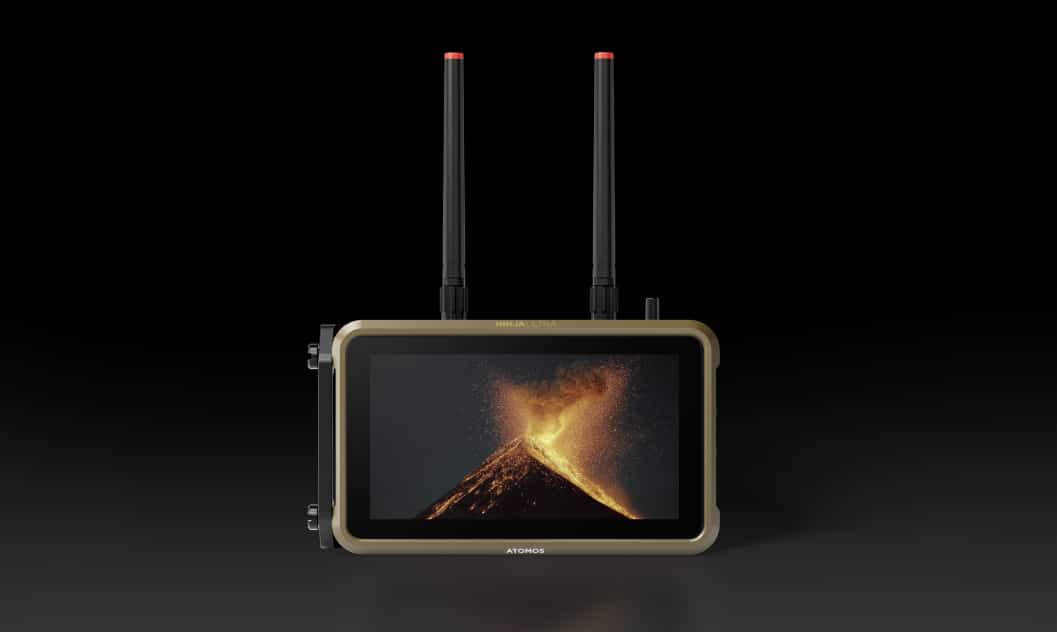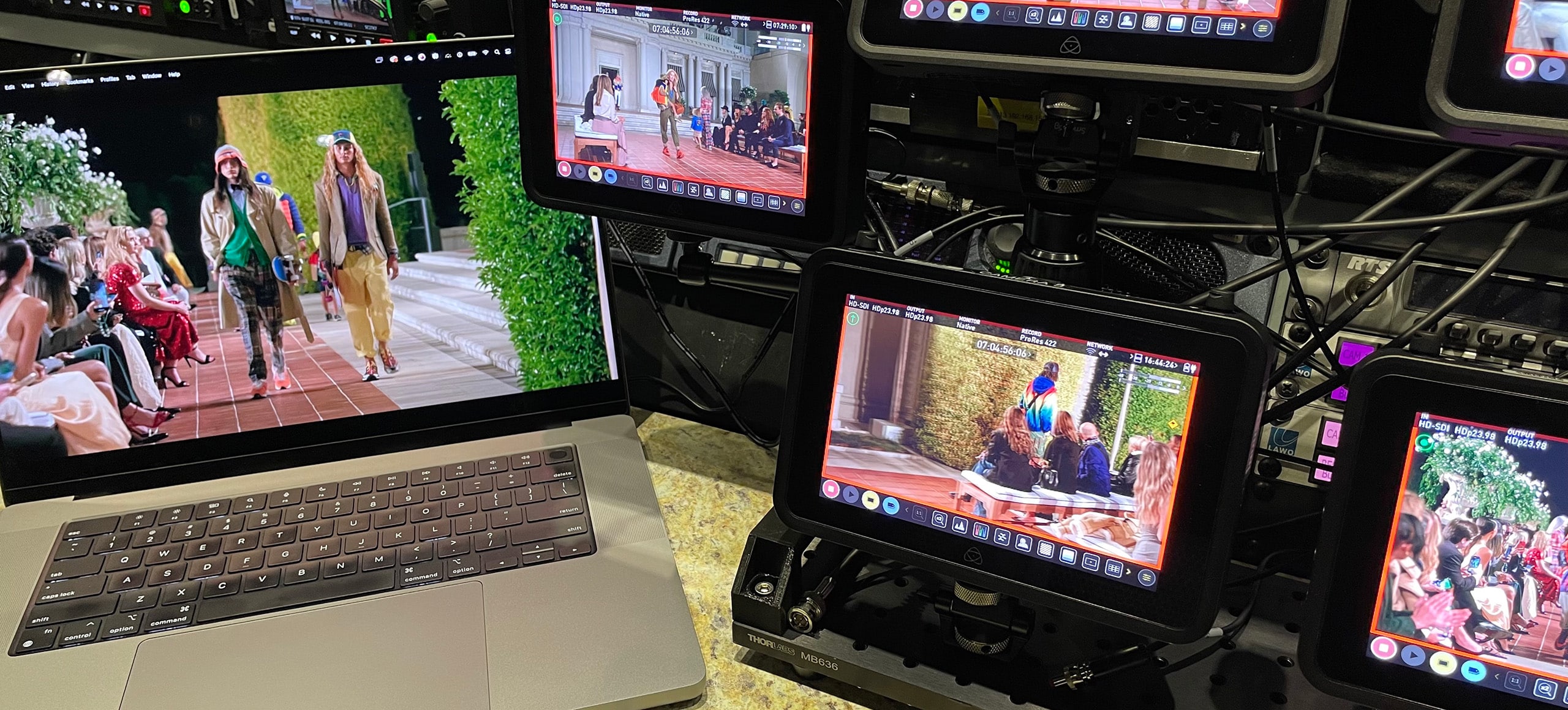Enabling Camera to Cloud with connected devices
Camera to cloud brings real benefits to real productions. Learn how it can help you, just like it helped three high-profile projects.
Camera to cloud (C2C) is one of the fastest-growing technologies in video production. It massively speeds up the content creation process by reducing the time between acquisition (shooting the video) and post-production because there’s no need to ship hard drives or copy files. C2C sends video from the camera directly to the cloud so that the editor and director can access content from anywhere in the world with an internet connection. Atomos, with its network-connected, on-camera Connect range of products, provides an easy but effective way to adopt C2C workflows.

The Ninja is Atomos’ most affordable ProRes monitor recorder. It has a bright, 5-inch HDR screen and can capture RAW video from a vast range of DSLR and mirrorless cameras to inexpensive removable SSD drives. Lightweight, compact, and typically mounted directly on the camera, it has become an essential part of many filmmakers’ and content creators’ toolkits.
Ninja Ultra is built to get the most out of cloud-based workflows and leans into cinematic workflows too. It can record full-quality files to ProRes RAW up to 4K 60p while at the same time recording HD 60p to H.265, and supports automatic matching filenames, timecode and record trigger from many different models of ARRI, Canon, Sony and RED cameras.
Both Ninjas need to be fitted with an Atomos Connect module to access a host of cloud-based services, including not just camera to cloud but streaming and live production too, via the Atomos Cloud Studio online portal.
Dual codecs, dual filenames
Atomos’ Connect-enabled monitor-recorders simultaneously capture two versions of the footage: a high-quality Apple ProRes or Avid DNx ‘hero’ file and a lightweight H265 HEVC 2K or 1080 ‘proxy’ file that gets instantly uploaded to a collaborative platform like Frame.io from Adobe, or Sony’s Ci media. The high bitrate and low bitrate versions share the same file name and timecode reference, allowing auto-conforming with any popular NLE. That includes Adobe Premiere Pro, Apple Final Cut Pro, Blackmagic Design DaVinci Resolve, and Avid Media Composer, which can all be used to create a high-resolution, finished project.
Proxy file sizes are much smaller than the original hero files, so they will upload to the cloud much faster using the public internet. For many social media platforms, and indeed for breaking news on conventional broadcasting services, proxy video quality is perfectly usable. For example, an HDp30 H.265 proxy file recorded at 10 Mbps is more than acceptable for use cases such as brand content marketing, events, or influencer content.
Camera to cloud in action
Victor Laforteza: speeding up workflows
Video and digital content maker Victor Laforteza specializes in fashion and beauty commercials. It’s a fast-moving industry where products are released regularly and rapidly. To keep the social media channels flowing, Laforteza uses multiple Atomos products to augment the workflow. He captures footage in-camera, storing a ProRes copy on his Ninja. An attached Atomos Connect simultaneously sends much smaller – but still visually high-quality proxy files – to the cloud, courtesy of Frame.io. The files are uploaded while shooting continues, allowing Laforteza’s editors to start work in the shortest possible time – despite being based in Taipei and Toronto.
The workflow incorporates quirks that quickly make sense when you understand the shoot’s goals. All shots are taken vertically because they are portraits. Shooting in this orientation uses the maximum sensor’s maximum resolution. A vertically-oriented Sumo 19-inch HDR monitor recorder provides visual feedback to the on-set talent.
Summing up his workflow, Laforteza said, “This mode of working closes the gap between filmmaking and post-production. With the Ninja V and Connect, it has allowed us to evolve our productions towards greater efficiencies.”
Ralph Lauren: high-end fashion shoot
For fashion designer Ralph Lauren’s 2023 debut show in Southern California, they deployed a C2C collaborative workflow with Frame.io where editors in Los Angeles and New York were able to work on the media as soon as it was uploaded, to create reels for Instagram.
Eight Shogun Connects took feeds from the SDI outputs of eight Sony Venice cameras, with an additional Shogun used to record the Director’s line cut. The Atomos devices recorded high-resolution footage for later use, but the entire show was edited and posted online using the HD H.265 proxy files that were uploaded directly to the cloud.

Sundance: the need for speed
The Sundance Film Festival is one of the most prestigious in the world. Held annually in Park City, Utah, it has a reputation for showcasing original, thought-provoking films – often by up-and-coming directors.
Gathering footage during the day and then editing it at night for The Daily Recap to be distributed the next day is not an easy job. Deploying multiple Connect-equipped Ninjas meant that footage could be delivered live throughout the day to the editing team, with next-day packages complete by end of play – hugely reducing the need for overnight work.
“The biggest hurdle for us is time,” explained RJ Glass, lead video editor for the Festival. “We had about a dozen camera teams in the field at any given time, and with them was a field producer. Every camera had an Atomos Ninja on the top. The Ninja was critical because, without it, we could not connect to the cloud. More than half a dozen editors are cutting throughout the day.”
Atomos progressive file transfer
Atomos has developed a new progressive file transfer technology so that the upload of the proxy file starts as soon as the camera starts recording, and the only requirement is an internet connection over common 4G LTE, 5G, Wi-Fi or wired networks. If, during the upload process, the connection is lost, the file upload starts again as soon as the connection is restored, ensuring that no data is lost. The Sundance crews found this out while driving around – the Wi-Fi would reconnect, and the upload would automatically recommence. “It’s like the media can find its own way home” quipped one of the camera operators.
Internet access speed is now the only bottleneck, but with advances in network technology rapidly leading to a world where every corner of the planet will have internet access, in the not-so-far-off future full resolution C2C will be available to any creator, anywhere in the world.
A gateway to faster, cloud-based workflows
With Connect, Atomos has extended the capabilities of its monitor recorders with a growing array of cloud-based tools and services. It brings an affordable C2C workflow to a much wider range of digital cinema, DSLR and mirrorless cameras than was previously possible.
Content creators can now store their footage simultaneously on the camera, in the cloud and on the Atomos recorder for total peace of mind. At the same time, remote and collaborative workflows can access their media anywhere in the world.
Atomos’ cloud services augment its physical products, empowering filmmakers and video creators with innovative tools. The result: a flexible ecosystem of subscription-based services that can scale with customers’ needs.